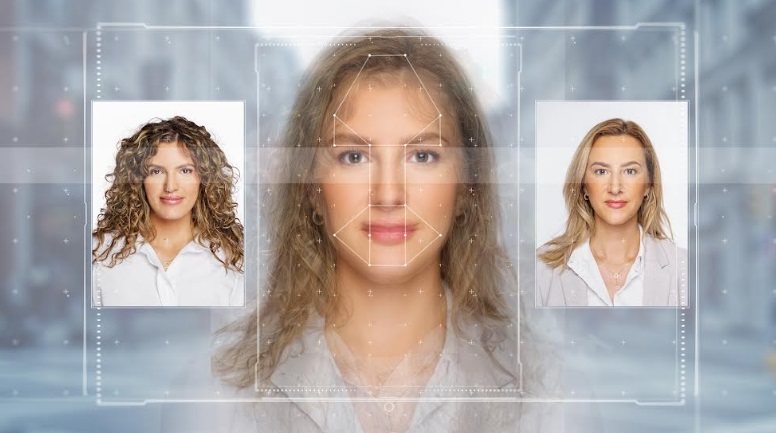The Fusion of Cloud Computing and Cutting-edge Technologies Emerges in Tackling the Deepfake Menace

In an era dominated by digital advancements, the rise of deepfake technology poses a significant threat to the integrity of information and media. Deepfakes, synthetic media created using artificial intelligence algorithms, can convincingly manipulate audio and video content, raising concerns about misinformation, identity theft, and the erosion of trust in media. As this challenge looms large, the marriage of cloud computing and cutting-edge technologies emerges as a crucial defense against the deepfake menace.
Deepfake Menace
Cloud computing, with its scalable infrastructure and processing power, plays a pivotal role in both the creation and mitigation of deep fakes. Numerous alarming incidents employing deepfake videos were reported in India in 2023. One such occurrence was actor Rashmika Mandanna, whose face was placed on that of a British-Indian social media celebrity.
According to the “2023 State of Deepfakes Report by “Home Security Heroes“, a US-based web security services provider, deepfake films have increased fivefold since 2019, underscoring the urgency of addressing this evolving threat. In this article, we explain, what can be done about the deepfake so far, and how cloud computing and cutting-edge technologies have emerged to tackle the situation.
How do Cloud-Based Threat Intelligence Platforms contribute to proactive defense strategies against deepfake
Mr. Ashish Laddha, Chief Delivery Officer at Quarks Technosoft explains, “Cloud-based threat intelligence platforms play a crucial role in coordinating responses to emerging deepfake challenges and contribute to a proactive defense against deepfake threats. These platforms leverage the collective intelligence gathered from various sources, including global network traffic, user behavior, and known threat databases. In the context of deepfakes, cloud-based threat intelligence platforms can analyze patterns and identify potential threats by monitoring the dissemination of deepfake content across cloud networks. By continuously updating threat databases and sharing real-time insights, these platforms enable a coordinated response among cloud service providers, security professionals, and law enforcement agencies. This proactive defense approach allows for the rapid identification and mitigation of deepfake threats before they can cause significant harm.”
How can global collaboration enhance the effectiveness of combating deepfake threats on a worldwide scale
Bhaskar Ganguli, Director of Marketing and Sales at Mass Software Solutions Pvt. Ltd., highlights the effectiveness of collaboration on cloud platforms in creating a global network of expertise. Cloud-based collaboration tools foster instantaneous information exchange and group problem-solving, facilitating seamless global cooperation among security experts. This global network enables the quick sharing of threat indicators, detection approaches, and responses, forming a united front against ever-evolving deepfake techniques.
How does adaptability play a crucial role in addressing the challenges posed by the constantly evolving deepfake landscape
Ratan Dargan, Co-founder and CTO of ThoughtSol Infotech, said, “As the deepfake landscape continues to evolve at a rapid pace, adaptability emerges as our greatest ally in confronting its myriad challenges. Cloud computings inherent flexibility empowers us to swiftly embrace advancements in detection technologies, staying ahead of the curve. By seamlessly integrating modern algorithms and machine learning models into our cloud systems, we not only enhance our detection capabilities but also foster an environment of constant innovation. In this ever-changing landscape, adaptability isnt just advantageous-its imperative.”
How does cloud computing contribute to the mitigation of deepfake threats
Mr. Visakh S, CTO, Simplify3X, said, “Cloud infrastructure supports real-time detection and mitigation through seamless integration with various platforms, curtailing the spread of deepfakes across digital channels. Additionally, cloud platforms facilitate collaboration, enabling shared datasets and cooperative algorithm development for enhanced detection accuracy. In a nutshell, cloud computing plays an indispensable role in addressing the deepfake menace, offering scalable, accessible, and collaborative solutions that harness AI advancements for effective detection and mitigation in real-time.”
How does the integration of AI and ML algorithms in cloud-based systems contribute to the enhanced accuracy and effectiveness of deepfake detection mechanisms
“The integration of artificial intelligence (AI) and machine learning (ML) algorithms within cloud-based systems enhances the accuracy and effectiveness of deepfake detection mechanisms. Through continuous training on diverse datasets, AI models can learn to discern subtle inconsistencies in facial expressions, voice modulation, and contextual cues, distinguishing genuine content from manipulated forgeries. By harnessing the power of AI-driven analytics, cloud-based solutions can stay ahead of evolving deepfake techniques, ensuring the robustness of content verification mechanisms,” stated by Pallav Agarwal, Founder & CEO, of HTS Solutions.
The threat posed by deepfakes highlights the pressing need for creative and scalable solutions, and cloud computing proves to be a key component in this continuing conflict. Organizations may implement strong protection measures, keep ahead of emerging threats, and promote cooperative efforts to safeguard the integrity of digital assets by utilizing the clouds computational power. The combination of cloud computing and cutting-edge technologies continues to be a ray of hope for preserving the legitimacy and dependability of our digital environment, even as the deepfake landscape changes.
![]()



